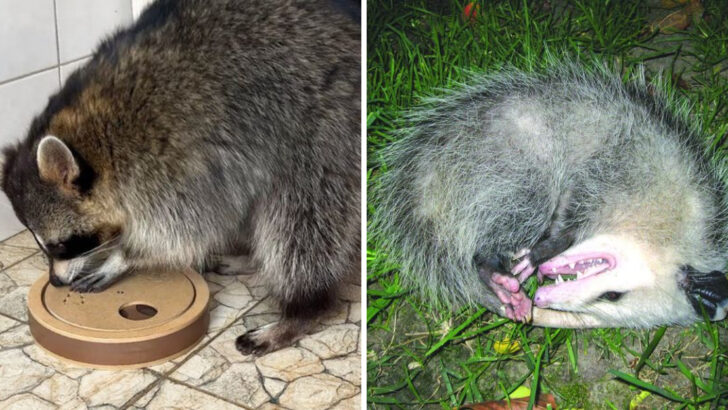Some animals are masterminds. Others… not so much.
In the wilds of North America, intelligence comes in all shapes and feathers. From crafty crows solving puzzles better than some humans, to creatures so blissfully clueless they walk straight into danger with a smile (or a blank stare).
You’ll meet escape artists, tool users, and memory champs—alongside animals who make you wonder how they’ve survived this long without a GPS or common sense.
This isn’t about judgment—it’s about marveling at the spectrum of smarts in the animal kingdom. Get ready to be impressed, amused, and maybe a little concerned.
American Crow
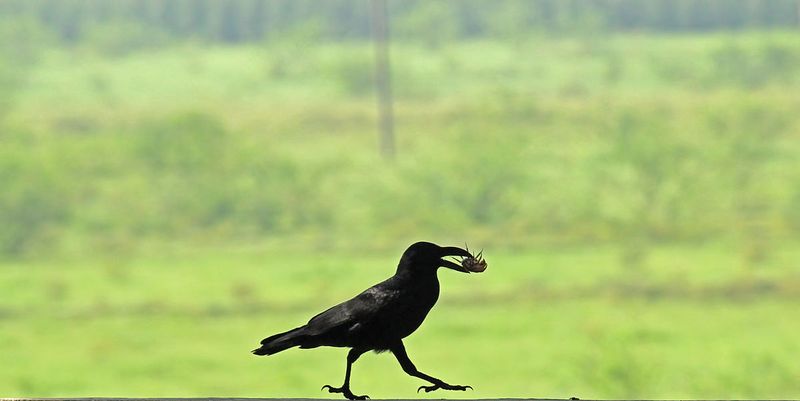
The American Crow, known for its sharp intellect, often surprises observers with its problem-solving skills. These birds are adept at using tools, such as sticks, to extract insects from bark. In urban areas, they have been observed dropping nuts onto roads to crack them open. Their communication is complex, involving a wide range of vocalizations and gestures. Crows also display an impressive memory, recognizing individual human faces and remembering them for years. This intelligence allows them to thrive in diverse environments, adapting to challenges with remarkable ease. Their playful antics and social structure further highlight their cognitive prowess.
Dolphin (Bottlenose)
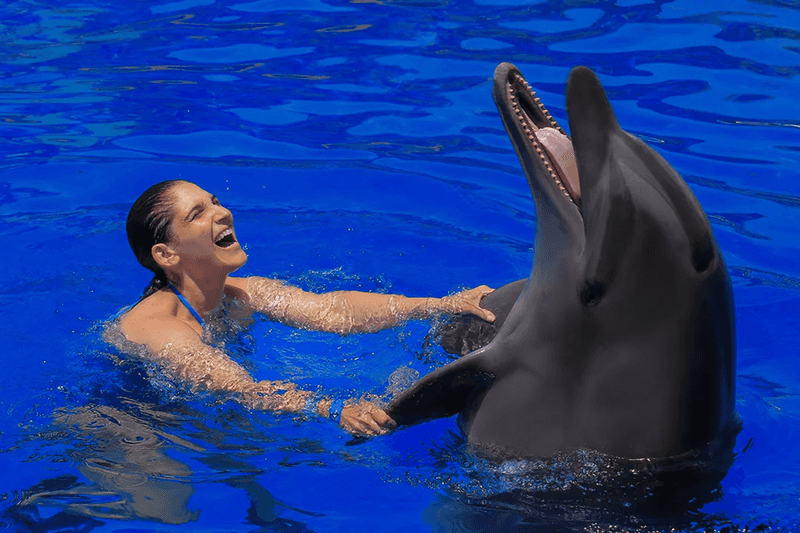
The Bottlenose Dolphin, with its sleek body gliding through the water, is a marvel of marine intelligence. Known for their playful nature, dolphins communicate using distinct clicks and whistles. They exhibit self-awareness, evident through mirror tests where they recognize themselves. Dolphins are also known to cooperate with humans, helping fishermen by driving fish into nets. In groups, they engage in intricate social behaviors, displaying empathy and problem-solving abilities. Their ability to learn complex tricks showcases not just intelligence but a unique bond with humans. These marine mammals are truly among the oceans’ most intelligent inhabitants.
Raccoon
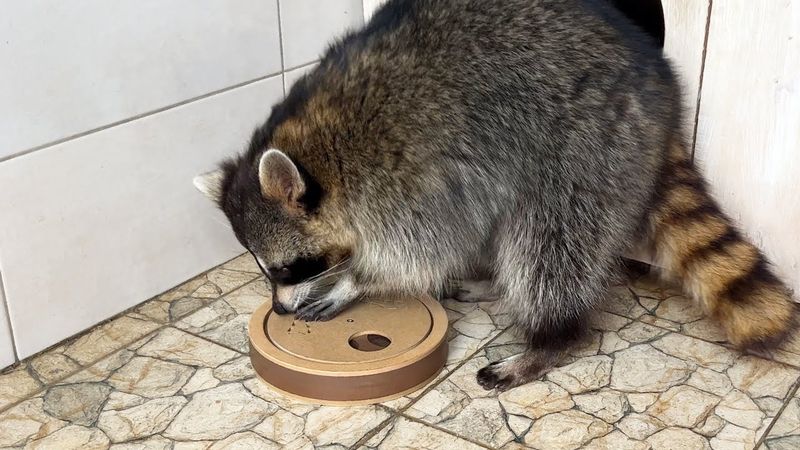
Raccoons, with their dexterous front paws, are the bandits of the animal kingdom, often getting into places they shouldn’t. Their intelligence is evident in their ability to open jars, doors, and even solve puzzles. Raccoons have been studied for their memory retention, which can last up to three years. They are highly adaptable, thriving in both urban and rural environments. Known for washing their food, these creatures exhibit behaviors that hint at a complex understanding of their surroundings. Their nocturnal activities often lead to humorous encounters with humans, showcasing their curious and clever nature.
Squirrel
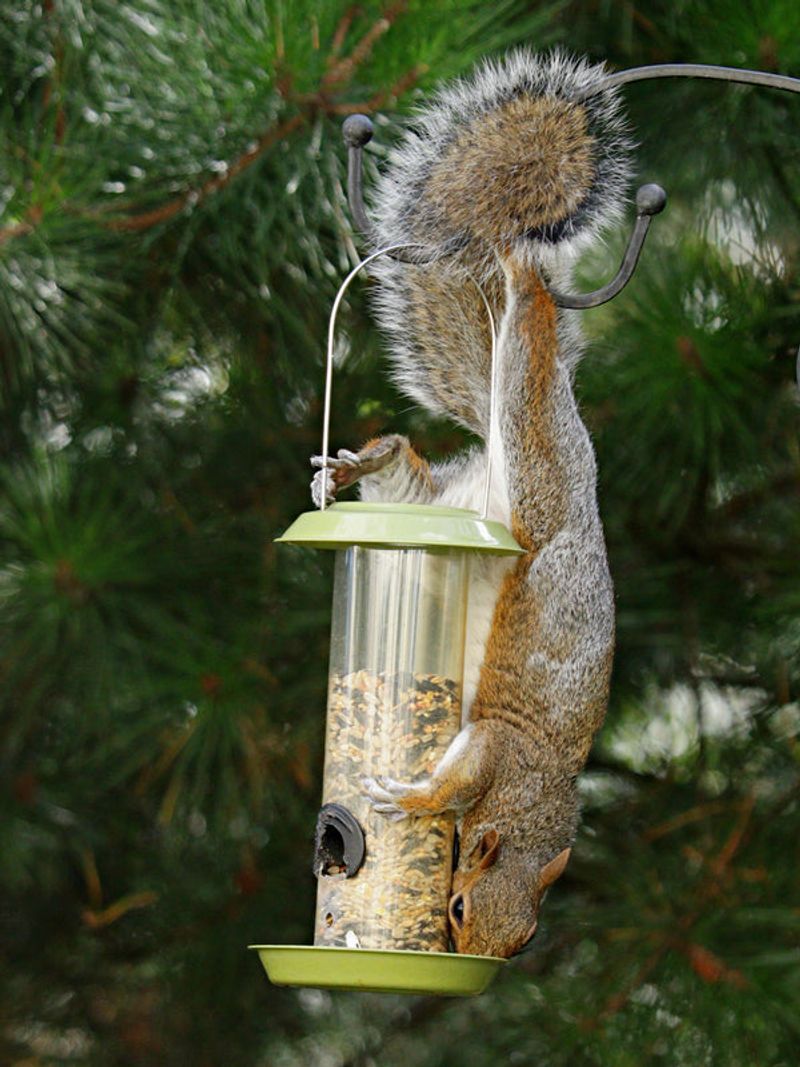
Squirrels, those agile entertainers of parks and gardens, are known for their acrobatics and strategic planning. Their intelligence shines through in their ability to remember the locations of hundreds of buried nuts. Squirrels use deceptive tactics, pretending to bury food to throw off potential thieves. Their problem-solving skills are evident when navigating bird feeders, often defeating intricate designs meant to keep them out. These creatures are also known for their adaptability, thriving in both urban and wild settings. The playful and sometimes mischievous behavior of squirrels makes them a delight to watch.
Orangutan (Sumatran)
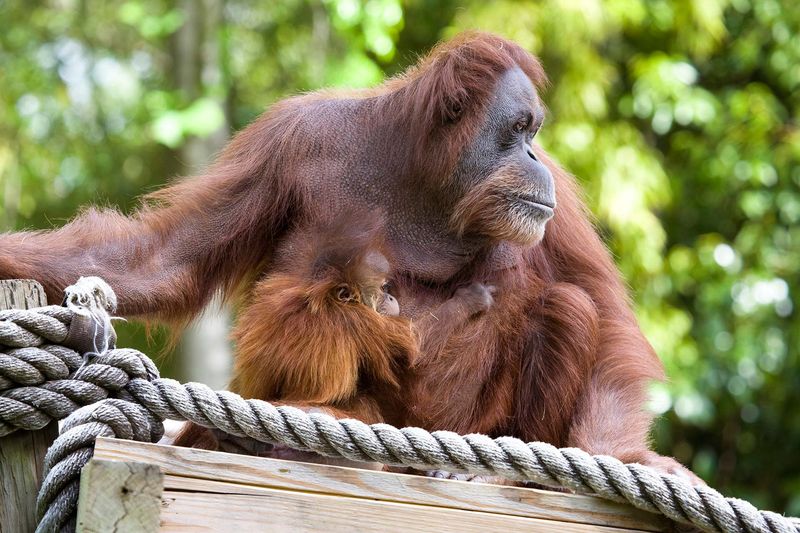
Orangutans, though not native to North America, are often seen in zoos where they display remarkable intelligence. These primates use tools to forage and have been observed creating simple shelters. Their cognitive abilities are akin to those of humans, and they exhibit complex social behaviors. Orangutans can learn to use sign language, showcasing their capacity for communication. They display empathy and have unique personalities, forming bonds with their caretakers. Watching an orangutan solve problems or engage in playful antics is a testament to their incredible intellectual abilities.
Gray Wolf
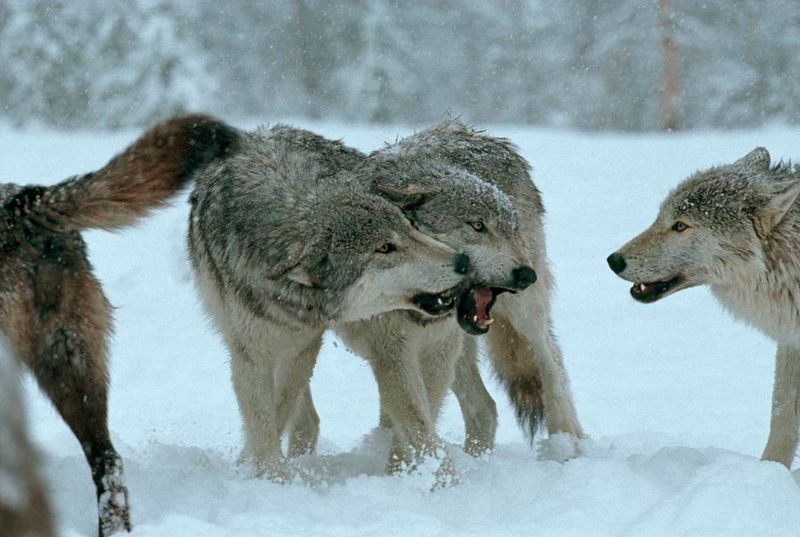
Gray Wolves, with their haunting howls, are symbols of wilderness intelligence. These pack animals employ sophisticated strategies to hunt and communicate. Their social structure is complex, with a defined hierarchy and roles within the pack. Wolves use vocalizations, body language, and even facial expressions to convey messages. Their keen sense of territory and ability to coordinate group activities showcase their cognitive skills. This intelligence is crucial for survival, allowing them to adapt to changing environments and challenges. Observing a wolf pack in action reveals the intricate balance of their wild world.
Beaver
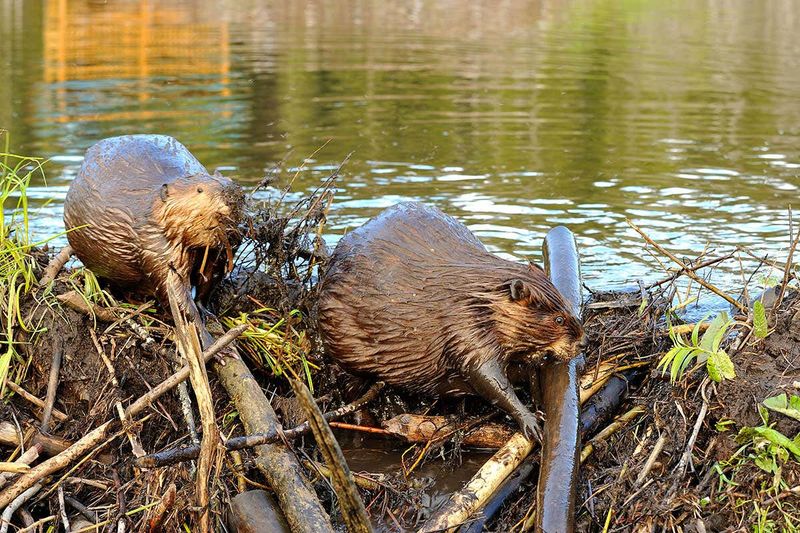
Beavers, nature’s architects, are renowned for their engineering skills. These industrious creatures build intricate dams and lodges, altering landscapes to create suitable habitats. Their work requires an understanding of materials and water flow, indicating problem-solving abilities. Beavers’ construction prowess provides benefits for other species, creating wetland environments that support biodiversity. Their social structure includes family units, and young beavers learn building skills from their parents. The sight of a beaver gnawing on a tree or swimming with branches is a reminder of their vital role in ecosystem dynamics.
Humpback Whale
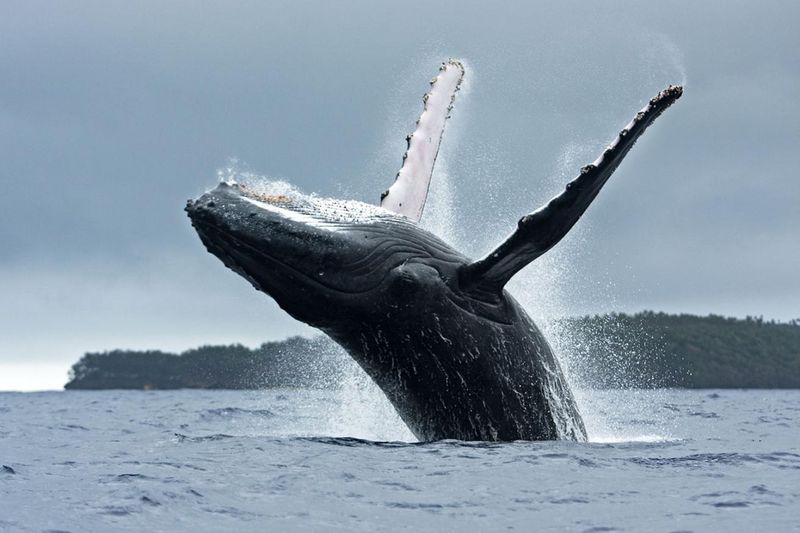
Humpback Whales, with their massive size and graceful movements, are ocean giants with surprising intelligence. Known for their complex songs, these whales communicate over vast distances. Their songs are often unique to specific groups, suggesting a form of cultural transmission. Humpbacks also exhibit cooperative hunting techniques, such as bubble net feeding, where they work together to corral fish. Their ability to navigate across oceans and their social interactions highlight cognitive abilities akin to community living. Watching a humpback breach is witnessing a blend of power and intellect in the marine world.
Octopus
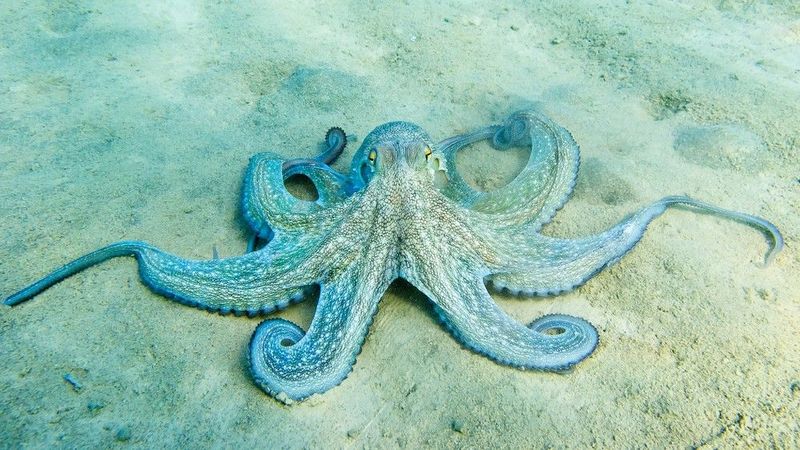
Octopuses are marine marvels revered for their problem-solving skills and adaptability. With the ability to camouflage, they expertly evade predators and hunt with precision. Octopuses can manipulate objects, open jars, and even escape enclosures, reflecting high intelligence. Their nervous system is complex, allowing them to learn and remember tasks. They display curiosity, exploring their environments with a tactile approach. The sight of an octopus changing color and texture is a mesmerizing demonstration of control and awareness. These fascinating creatures offer a glimpse into the intelligent life lurking beneath the waves.
Turkey
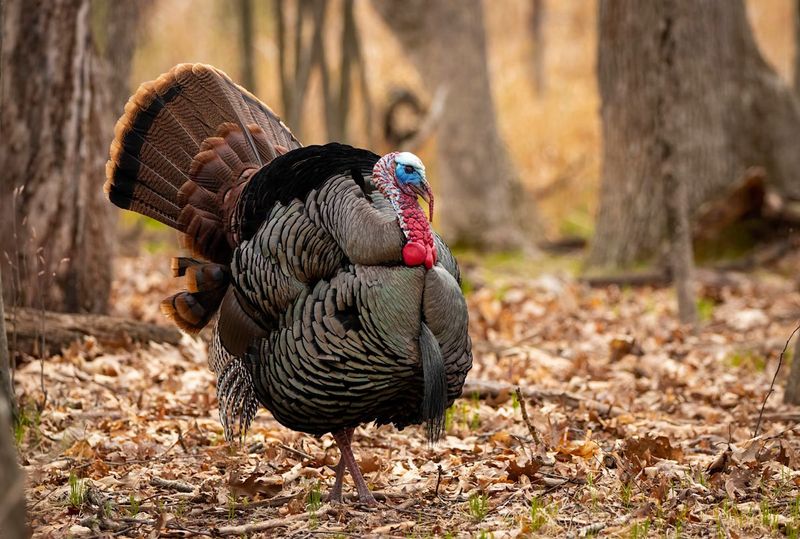
Wild Turkeys, with their distinctive gobbles, are surprisingly less savvy in the animal kingdom. Known for their poor decision-making, they often freeze at loud noises instead of fleeing. Despite their lack of street smarts, turkeys have a strong survival instinct. They can run swiftly and fly short distances to evade predators. Turkeys are also social, with a hierarchy that dictates group dynamics. While not winning any intelligence contests, their presence in North American woodlands adds a charming element to the landscape. Watching a turkey flaunt its feathers is a sight filled with rustic allure.
Armadillo

Armadillos, with their unique armored shells, are quirky yet not the brightest. These creatures often rely on their protective shells rather than cunning to evade threats. Known for their obliviousness, they sometimes wander onto roads despite obvious dangers. Armadillos have poor eyesight, which doesn’t help their case. However, their digging skills contribute positively to soil aeration. Despite their shortcomings, they play a vital role in the ecosystem. Watching an armadillo trundle across the desert landscape is a reminder of nature’s diverse and sometimes clumsy creations.
Opossum
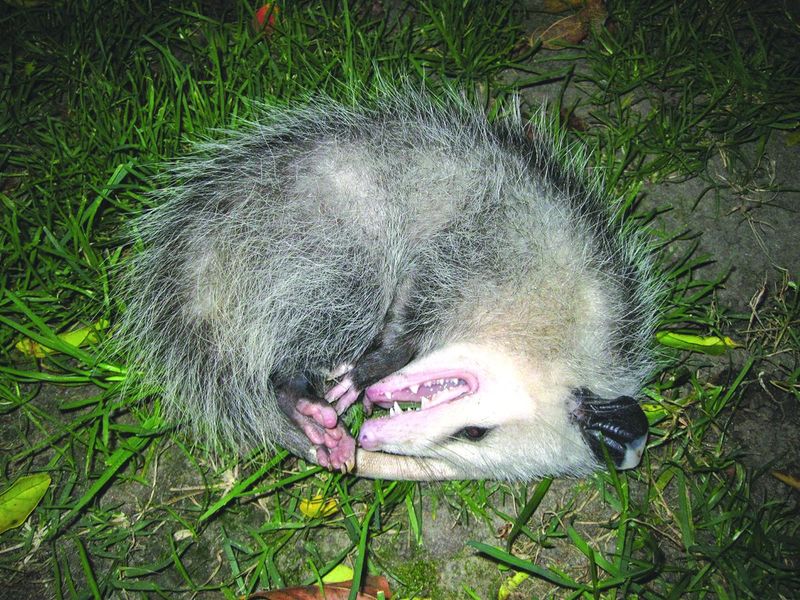
Opossums, the only marsupial in North America, are often underestimated. Their defense mechanism involves playing dead, which can be effective but also leaves them vulnerable. Not known for intelligence, opossums tend to wander into hazardous areas. Despite this, they have a remarkable immune system and consume pests, contributing to ecological balance. Their nocturnal habits make them a common sight in suburban areas, often scavenging for food. Watching an opossum’s awkward antics can be amusing, showcasing the varied survival strategies in the animal world.
Moose
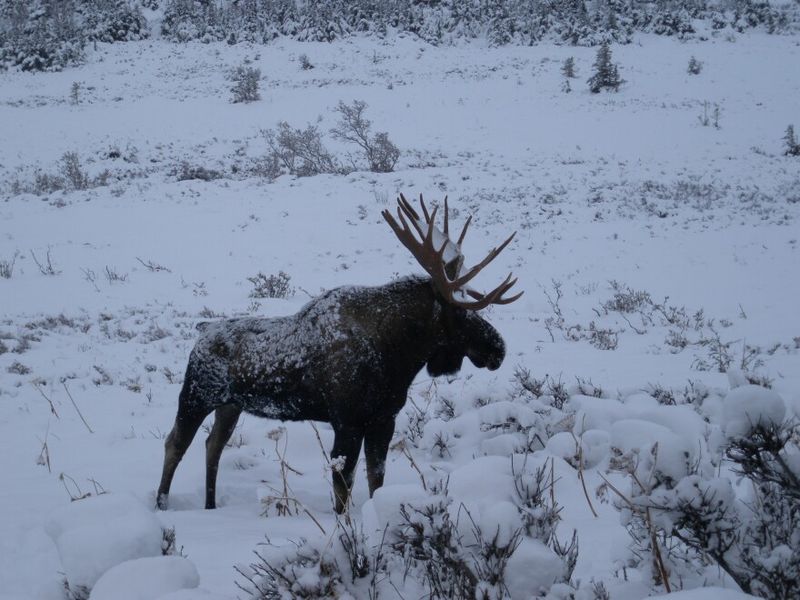
Moose, towering and majestic, are not celebrated for their wits. These herbivores often appear bewildered, wandering aimlessly in search of food. Despite their size, they are not particularly agile, often struggling to navigate obstacles. However, their sheer presence and strength demand respect in the wild. Moose play a vital role in their ecosystem, influencing vegetation dynamics. Observing a moose in its snowy habitat is a humbling experience, emphasizing the grandeur and simplicity of nature’s design. While they may not top the intelligence charts, their majesty is undeniable.
Gopher
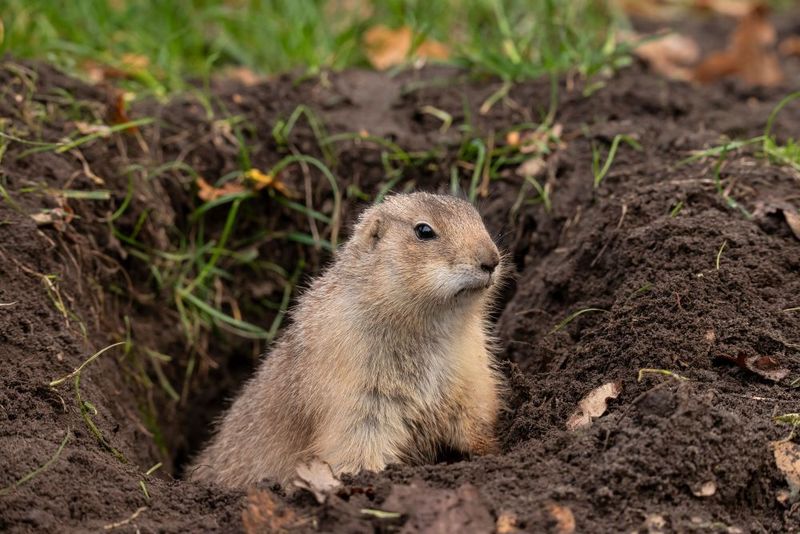
Gophers, with their cheeky faces, are prolific diggers but not known for their brains. These rodents create extensive tunnel systems, often oblivious to the chaos they cause above ground. Gophers focus on gathering food, storing it in their burrows with little regard for strategy. Their solitary nature means they avoid complex social interactions. While their digging disturbs human activities, it also benefits soil health. Watching a gopher’s head pop out from the earth is a playful reminder of life’s simpler creatures. Despite their lack of sophistication, gophers play a part in the balance of nature.
Turkey Vulture
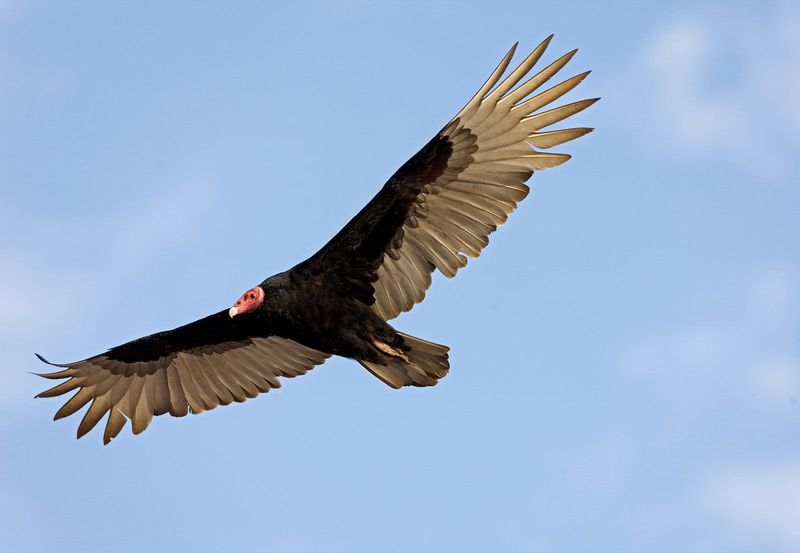
Turkey Vultures, with their bald heads and keen senses, excel at scavenging but not at intelligent feats. They rely heavily on smell to locate carrion, which is quite unusual for birds. Their flight patterns are graceful, soaring with minimal effort, yet they often appear awkward on the ground. While not engaging in complex behaviors, they are vital for cleaning up ecosystems by consuming decaying matter. Observing a turkey vulture in flight offers a glimpse into the grace of nature’s cleanup crew. Despite their simplicity, they play a crucial ecological role.
Porcupine
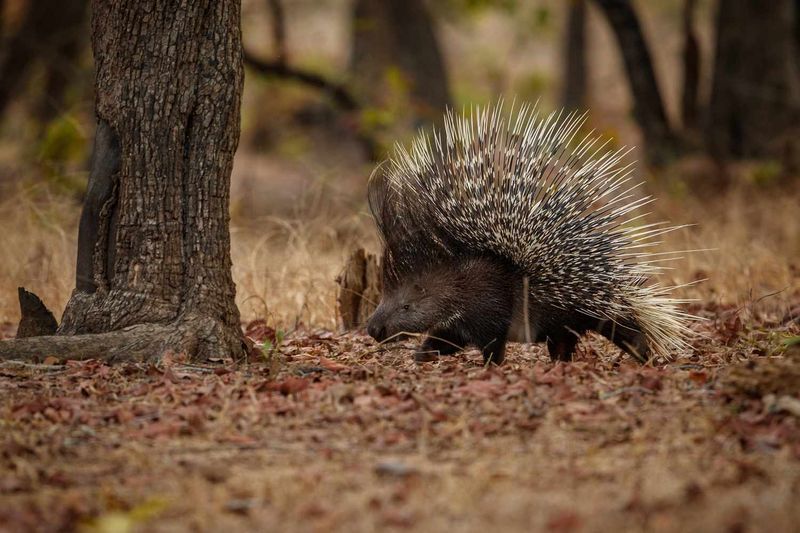
Porcupines, with their quilled armor, are intriguing but not the sharpest thinkers. These solitary animals rely on their quills for defense, often backing into threats rather than fleeing. While their foraging habits are simple, they do adapt to seasonal changes by modifying their diet. Porcupines are nocturnal and shy, often heard more than seen. Their diet of bark and leaves plays a role in forest dynamics, although they can cause damage to young trees. Watching a porcupine waddle through the woods is a charming encounter with one of nature’s more peculiar inhabitants.
Snapping Turtle
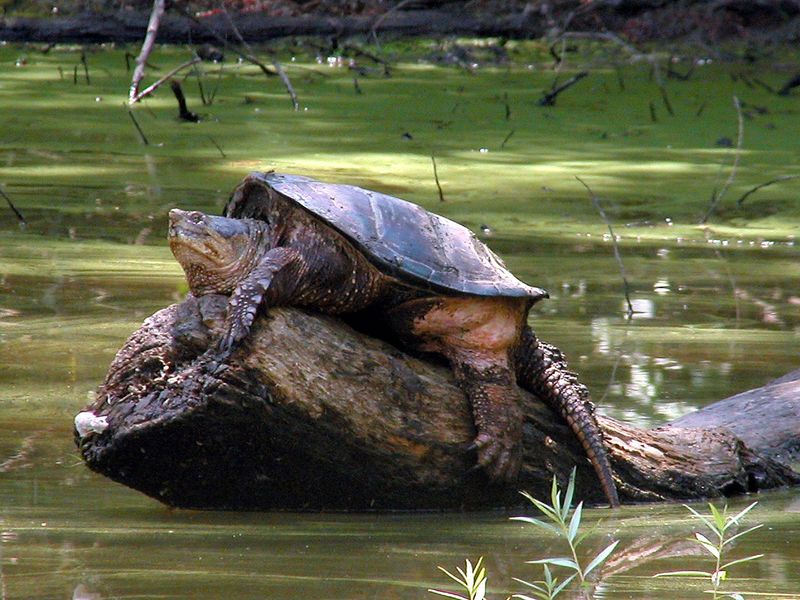
Snapping Turtles, with their prehistoric appearance, are not celebrated for their intellect. These aquatic reptiles rely on instinct rather than cunning, often remaining hidden in murky waters. Known for their powerful jaws, they are opportunistic feeders. Their slow-moving nature is deceptive, as they can snap quickly when threatened. While not engaging in complex behaviors, snapping turtles play a role in keeping aquatic ecosystems balanced. Observing a snapping turtle emerge from the water is a peek into a world where ancient instincts still reign. Despite their simplicity, they are fascinating survivors.
Alligator
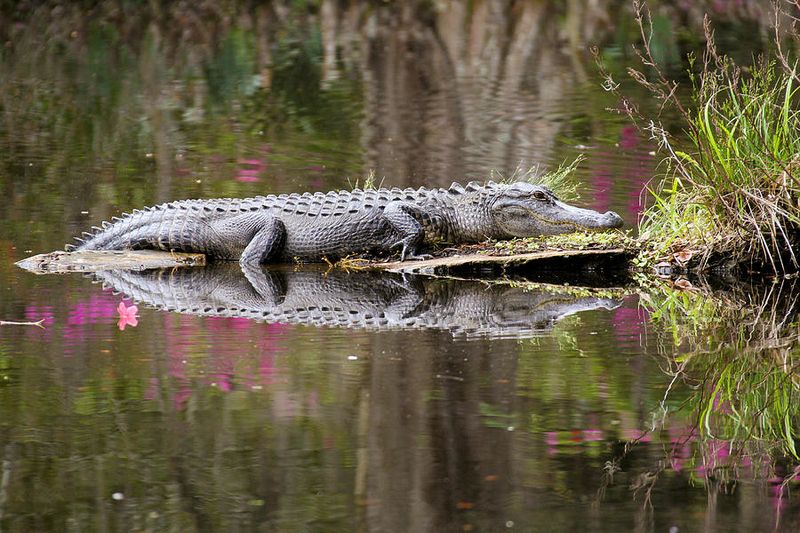
Alligators, with their menacing grins, are ancient predators with simple survival tactics. They rely on stealth and strength rather than intelligence to capture prey. Alligators can remain motionless for hours, ambushing when the opportunity arises. Despite their fearsome reputation, they play an essential role in wetland ecosystems. Their nesting behaviors contribute to habitat diversity, providing shelter for other species. Watching an alligator bask lazily is a reminder of the ancient lineage that thrives in modern times. While not known for profound thought, they are masters of their environment.

